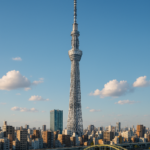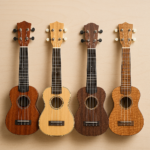
Flashlights are one of those everyday tools we often take for granted—until the power goes out or we find ourselves in the dark. But behind their simple design lies a fascinating history and a world of innovation. From their humble beginnings in the late 19th century to today’s ultra-bright, waterproof, and solar-powered models, flashlights have evolved into essential gadgets used by everyone from campers and homeowners to military personnel and emergency responders. In this blog, we’ll shine a light on some of the most intriguing and surprising facts about flashlights—covering everything from record-breaking brightness levels to the smallest models ever made. Whether you’re a tech enthusiast, a survivalist, or just curious, these flashlight facts are sure to illuminate your understanding of this indispensable tool.
- Year of Invention – 1899
The flashlight was invented in 1899 by David Misell, an English inventor who was working in the United States. His creation marked a turning point in portable lighting technology. Before flashlights, people relied on candles, oil lamps, and gas-powered lanterns, which posed fire hazards and were not easily portable. Misell’s flashlight used dry cell batteries, which were a relatively new invention at the time, and provided a safer, cleaner, and more convenient source of light. This innovation laid the groundwork for the development of countless flashlight variations used today in homes, industries, and emergency services. - Patent Date – January 10, 1899
David Misell officially filed a patent for his flashlight design on January 10, 1899, and it was granted later that year. The patent described a handheld electric light powered by dry cell batteries, featuring a switch and a bulb housed in a tube. This patent was one of the earliest for portable electric lighting and helped establish the flashlight as a commercial product. Misell donated several of his patented flashlights to the New York City Police Department, which began using them in patrols, demonstrating their practical utility and boosting public interest. - Battery Type Used – Three D-Cell Batteries
The original flashlight design utilized three D-cell batteries, which were large cylindrical batteries capable of delivering sufficient power to light a small incandescent bulb. These batteries were housed in a tube and connected in series to provide the necessary voltage. D-cell batteries became a standard for many flashlight models throughout the 20th century due to their balance of size, capacity, and availability. Although modern flashlights often use smaller or rechargeable batteries, D-cells are still used in heavy-duty models. - Original Material – Paper Tube Casing
Early flashlights were surprisingly made with paper tube casings, which were lightweight and inexpensive but not very durable. These casings were often reinforced with brass end caps to hold the batteries and bulb in place. The use of paper reflected the experimental nature of early flashlight manufacturing, as companies sought affordable ways to produce and distribute the new technology. Over time, manufacturers transitioned to metal and plastic casings, which offered better protection and longevity, especially for outdoor and industrial use. - Brightest Flashlight Output – Over 100,000 Lumens
Some of the most powerful flashlights available today can emit over 100,000 lumens, a level of brightness that can illuminate vast areas and even rival car headlights or stadium lighting. These ultra-bright flashlights are typically used in search and rescue operations, military missions, and industrial inspections. They often feature multiple high-output LEDs, advanced heat dissipation systems, and large rechargeable battery packs. Due to their intensity, these flashlights must be handled carefully to avoid eye damage or overheating. - LED Efficiency – Up to 90% Less Energy
LED flashlights are known for their energy efficiency, consuming up to 90% less energy than traditional incandescent bulbs. This efficiency means that LED flashlights can run longer on the same battery charge, making them ideal for emergency kits, outdoor adventures, and professional use. LEDs also convert more energy into light rather than heat, which improves safety and performance. Their low energy consumption has made them the dominant technology in flashlight design since the early 2000s. - LED Lifespan – Up to 50,000 Hours
High-quality LED bulbs used in flashlights can last up to 50,000 hours, which is equivalent to over five years of continuous use. This long lifespan drastically reduces the need for bulb replacements and makes LED flashlights more cost-effective over time. Unlike incandescent bulbs, LEDs do not burn out suddenly but gradually dim, allowing users to anticipate when a replacement might be needed. Their durability also makes them ideal for rugged environments and professional applications. - Beam Distance – Over 1,000 Meters
Advanced tactical and search flashlights can project beams over 1,000 meters (1 kilometer), allowing users to see distant objects clearly in complete darkness. This capability is achieved through powerful LEDs combined with precision optics and reflectors that focus the light into a narrow, intense beam. Such flashlights are essential for search and rescue teams, hunters, and military personnel who need long-range visibility in challenging conditions. - Smallest Flashlight – 1.6 Inches
The smallest commercially available flashlights measure just 1.6 inches (4 cm) in length and are often designed as keychain accessories. Despite their tiny size, these flashlights can emit several lumens of light, enough to illuminate a small area or help find objects in the dark. They typically use button-cell batteries and micro-LEDs, and their compact design makes them ideal for everyday carry, emergency kits, or backup lighting. - Heaviest Tactical Flashlight – Over 2 Pounds
Some tactical flashlights, especially those designed for military or law enforcement use, weigh over 2 pounds (0.9 kg). These flashlights are built with heavy-duty materials like aircraft-grade aluminum and feature large batteries, high-lumen output, and reinforced lenses. Their weight adds to their durability and can even allow them to be used as a self-defense tool. Despite their bulk, they are favored in situations where reliability and performance are paramount. - Longest Flashlight – Over 18 Inches
Industrial and specialty flashlights can reach lengths of over 18 inches (45 cm), accommodating larger batteries and more powerful lighting components. These long flashlights are often used in construction, mining, and emergency services where extended reach and high brightness are necessary. Their size also allows for better heat dissipation and more robust construction, making them suitable for harsh environments. - Waterproof Rating – IPX8
Flashlights with an IPX8 waterproof rating can be submerged in water deeper than 1 meter for 30 minutes or more without damage. This rating is crucial for divers, rescue workers, and outdoor enthusiasts who operate in wet or underwater conditions. IPX8-rated flashlights are sealed with O-rings and waterproof materials to prevent water ingress, ensuring reliable performance even in extreme environments. - Temperature Resistance – -20°C to +60°C
Rugged flashlights are engineered to function in extreme temperatures ranging from -20°C to +60°C, making them suitable for use in arctic expeditions, desert operations, and industrial settings. These flashlights use temperature-resistant materials and components that maintain performance despite environmental stress. Their ability to operate in such a wide temperature range ensures reliability in virtually any climate. - Drop Resistance – 2 Meters or More
Many tactical and outdoor flashlights are rated to survive drops from 2 meters or higher, thanks to shock-resistant designs and durable materials. These flashlights often feature reinforced bodies, rubberized grips, and impact-resistant lenses. Drop resistance is a key feature for users in law enforcement, military, and outdoor activities, where equipment may be subjected to rough handling or accidental falls. - Recharge Cycles – 500 to 1,000
Rechargeable flashlights typically support 500 to 1,000 charge cycles, depending on the battery type and usage conditions. Lithium-ion batteries, commonly used in modern flashlights, offer high energy density and long cycle life. This means users can recharge their flashlight hundreds of times before the battery capacity begins to degrade significantly, making them more economical and environmentally friendly than disposable battery models. - Solar Charging Time – 6 to 10 Hours
Solar-powered flashlights require 6 to 10 hours of direct sunlight to fully charge, depending on the solar panel size and battery capacity. These flashlights are ideal for camping, hiking, and emergency preparedness, offering a renewable source of energy when electricity is unavailable. While they may not charge as quickly as plug-in models, their independence from the grid makes them invaluable in remote or disaster-stricken areas. - Battery Life – Up to 100 Hours
On low brightness settings, some LED flashlights can operate for up to 100 hours continuously. This extended battery life is especially useful during emergencies, long outdoor trips, or power outages. Flashlights with multiple brightness modes allow users to conserve energy by switching to lower settings when full brightness is not needed, maximizing battery efficiency. - Light Modes – Up to 7
Advanced flashlights can feature up to 7 light modes, including high, medium, low, strobe, SOS, beacon, and turbo. These modes provide versatility for different situations, such as signaling for help, conserving battery, or temporarily blinding an attacker. Mode selection is typically controlled via a button or rotating switch, allowing users to adapt the flashlight’s output to their specific needs. - Zoom Capability – Over 200 Meters
Flashlights with adjustable zoom can focus their beam to illuminate objects over 200 meters away. This feature allows users to switch between a wide floodlight for close-range visibility and a narrow spotlight for long-distance viewing. Zoom mechanisms often involve sliding or rotating the flashlight head, and are popular among hikers, hunters, and security personnel. - Mounting Options – Firearm Rails
Tactical flashlights often include mounting options for firearm rails, allowing them to be securely attached to rifles, shotguns, or handguns. These mounts enable hands-free operation and improve visibility during nighttime operations or low-light combat scenarios. Mounted flashlights are designed to withstand recoil and are often activated via remote switches for convenience. - Military Use – Over 30 Countries
Flashlights are standard issue in the armed forces of over 30 countries, used for navigation, signaling, and tactical operations. Military flashlights are built to strict specifications, including waterproofing, shock resistance, and infrared compatibility. Some models include filters for night vision or signaling, and are designed to operate reliably in combat zones and extreme environments. - Law Enforcement – Over 1,000 Lumens
Police-grade flashlights typically emit over 1,000 lumens, providing intense brightness for blinding suspects, searching dark areas, or conducting nighttime patrols. These flashlights are compact, durable, and often feature strobe modes for disorientation. Law enforcement officers rely on them for both illumination and tactical advantage during operations. - Emergency Kits – 80% Inclusion Rate
Studies show that over 80% of emergency preparedness kits include a flashlight, highlighting its importance in disaster readiness. Flashlights provide essential lighting during power outages, natural disasters, and roadside emergencies. Compact, long-lasting LED models are preferred for emergency kits due to their reliability and low maintenance. - Global Market Size – $6.1 Billion (2023)
The global flashlight market was valued at $6.1 billion USD in 2023, driven by demand from consumers, professionals, and military sectors. Innovations in LED technology, rechargeable batteries, and smart features have expanded the market, with flashlights now serving roles in personal safety, outdoor recreation, and industrial work. - Annual Production – Over 100 Million Units
Each year, manufacturers produce over 100 million flashlights worldwide, reflecting their universal utility and demand. Flashlights are used in homes, vehicles, workplaces, and outdoor settings, making them one of the most widely distributed portable tools. This massive production scale supports a diverse range of models, from budget-friendly keychain lights to high-end tactical gear.
Frequently Asked Questions About Flashlights
1. What is a flashlight and how does it work?
A flashlight is a portable handheld device that emits light using a bulb or LED powered by batteries. It works by completing an electrical circuit when the switch is turned on, allowing current to flow from the battery to the light source. Modern flashlights use LEDs, which are more energy-efficient and durable than traditional incandescent bulbs.
2. What are lumens and why do they matter in flashlights?
Lumens measure the total amount of visible light emitted by a source. In flashlights, higher lumens mean brighter light. For example, a 100-lumen flashlight is suitable for indoor use, while tactical or search flashlights may exceed 1,000 lumens for outdoor or professional applications.
3. What types of batteries do flashlights use?
Flashlights can use disposable batteries (AA, AAA, C, D) or rechargeable ones (Li-ion, NiMH). Rechargeable flashlights are more eco-friendly and cost-effective over time. Some models also support USB charging or solar power for added convenience.
4. What is the difference between LED and incandescent flashlights?
LED flashlights use light-emitting diodes, which are more energy-efficient, last longer (up to 50,000 hours), and produce less heat. Incandescent flashlights use filament bulbs that consume more power and have shorter lifespans. LEDs are now the standard in most modern flashlights.
5. How long do flashlight batteries last?
Battery life depends on the flashlight’s brightness setting and battery type. On low mode, some LED flashlights can last up to 100 hours. High-lumen settings drain batteries faster. Rechargeable batteries typically last 500–1,000 charge cycles.
6. What is beam distance and why is it important?
Beam distance refers to how far the light from a flashlight can reach. It’s crucial for outdoor activities, search and rescue, or tactical use. Some high-performance flashlights can project beams over 1,000 meters.
7. Are flashlights waterproof?
Many flashlights are water-resistant or waterproof, rated by the IPX system. For example, IPX4 resists splashes, while IPX8 can be submerged in water deeper than 1 meter for extended periods. Waterproof flashlights are ideal for diving, fishing, and rainy conditions.
8. What are the different modes in a flashlight?
Modern flashlights often feature multiple modes: high, medium, low, strobe, SOS, and turbo. These modes allow users to adjust brightness, signal for help, or conserve battery life. Some models also include memory functions to remember the last used mode.
9. Can flashlights be used for self-defense?
Yes, tactical flashlights can be used for self-defense. Their high brightness (over 1,000 lumens) can temporarily blind an attacker. Some models have beveled edges or sturdy bodies that can be used as striking tools.
10. What is a tactical flashlight?
A tactical flashlight is designed for military, law enforcement, or self-defense use. It typically features high brightness, durable construction, strobe mode, and mounting options for firearms. These flashlights are built to withstand harsh environments.









